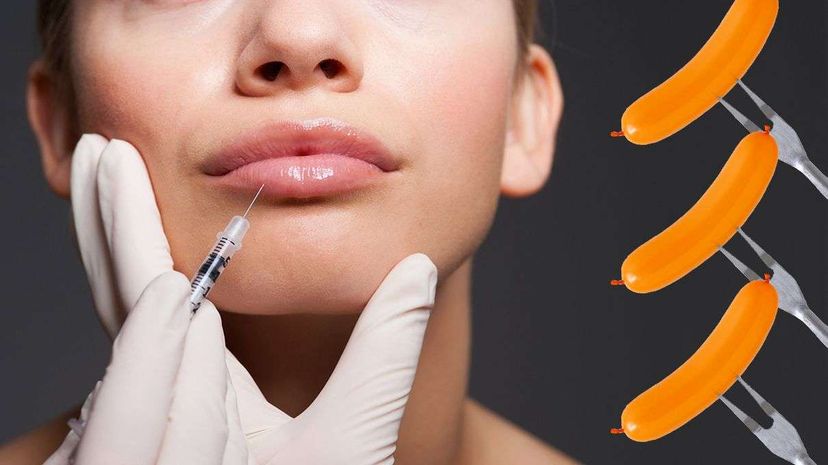
Frown lines? Crows' feet? Now you can make them disappear in the blink of an ... injection. Botox has become a popular cosmetic treatment, and while it's pretty common knowledge at this point that Botox goes hand-in-hand with a deadly toxin, what's less well known is that it's all due to a batch of killer sausages in the early 1800s. It was this perfectly poisonous tubepork medley that Justinus Kerner, a German physician, first suspected as the source of a potentially deadly, muscle-relaxing botulinum toxin.
Sausage of questionable freshness was de rigueur in turn-of-the-19th-century Germany, but after mysterious outbreaks of "sausage poisoning" during the Napoleonic Wars repeatedly killed scores of people, Kerner got wise to the cause and after rigorous testing of hundreds of sausages — and self-injections of the suspected toxin — he became the first to identify and publish a clinical description of the toxin and its effects.
Advertisement
Food-borne botulism is caused when the things we munch are infected with the spores of Clostridium botulinum microbes, a nearly bullet-proof bacteria commonly found in soil around the globe. When the microbe contaminates meat (and occasionally, produce), it flourishes in oxygen-depleted environments. This makes it the perfect deadly pairing with poorly preserved foods and salted meats.
Although botulinum toxin causes vision problems, difficulty swallowing, vomiting and severely weakened muscles, people are so resourceful that they've figured out a way to harness the toxin and focus its effects in specific ways. Case in point: the popularity of a wrinkle-erasing serum known by the brand name Botox, whose use has jumped by more than 700 percent since 2000, according to the American Society of Plastic Surgeons.
And this increase only reflects cosmetic use — that's not all it does. Botulinum toxin is quite useful for a range of medical maladies, including excessive sweating and migraines. It also can relax the perpetually contracted muscles of people who have cerebral palsy.
The art of lookin' good, just like botulinum toxin, has a long and dubious history. Ancient Egyptians painted their eyelids with a toxic cocktail of copper ore and lead, and the exposure lead to insomnia and brain damage. Greeks smeared their faces with a lead-based cream, which eventually caused madness. Going to these great lengths may seem a bit ridiculous, especially when one considers sacrificing health for beauty, but it's not as far removed as you may think.
We still use mercury in some eye cosmetics as a preservative (although some states have banned the element). And in 2007, one-third of 33 red lipsticks examined by a safe cosmetics advocacy group were found to contain lead. As of 2016 the U.S. Food and Drug Administration doesn't have a set limit for lead in cosmetics. The country does have a set of standards for commercial cured meat production, however — making most cases of botulinum toxin poisoning a thing of the past.
Advertisement

